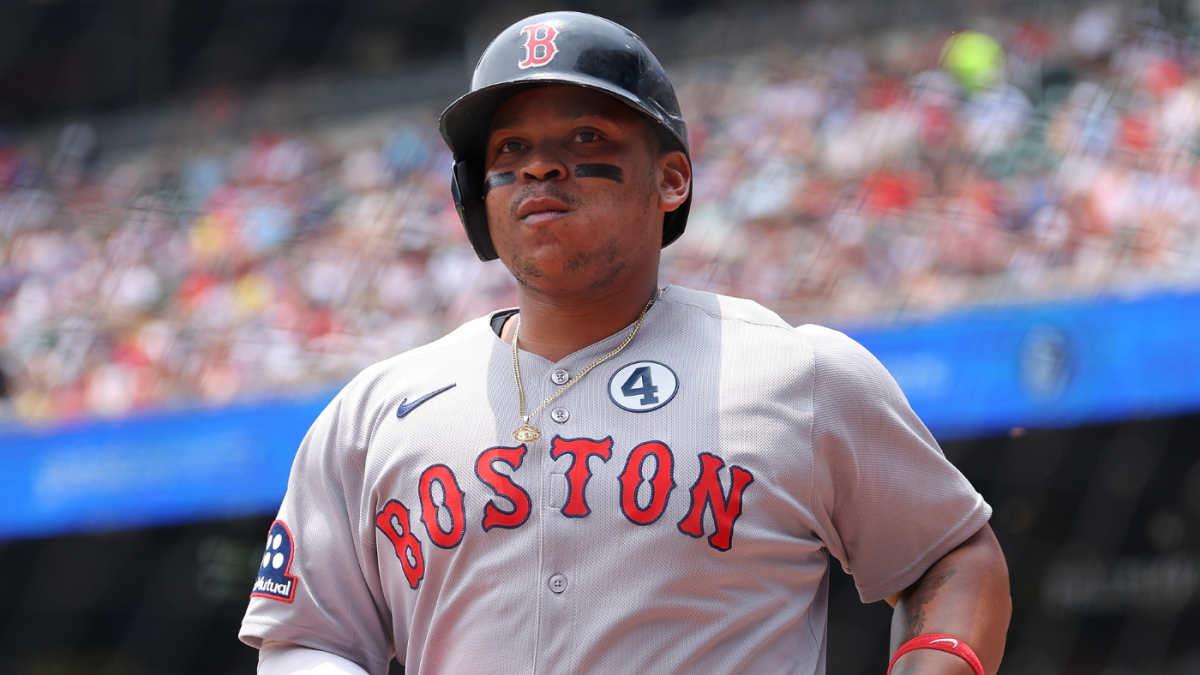The Complex Dynamics Behind the Rafael Devers Trade
The Boston Red Sox’s trade of Rafael Devers to the San Francisco Giants is not merely a player transaction; it symbolizes deeper currents swirling through Major League Baseball today. Behind the headlines lies a story rich with personal conflicts, strategic calculations, and identity shifts—both for the player and the teams involved. Dissecting this trade reveals how modern baseball balances individual aspirations and collective goals, alongside financial realities and positional intricacies.
The Fractured Relationship: More Than Just a Position
Rafael Devers was more than a third baseman for Boston—he was a symbol of the team’s future, locked in by a record-breaking 10-year contract that embodied mutual commitment. Yet the arrival of star third baseman Alex Bregman forced an unwelcome crossroads. Management’s demand that Devers move from his lifelong position to designated hitter, and possibly to other roles, sparked a serious rift. This wasn’t just a logistical shuffle; it struck at the core of Devers’s professional identity.
For a player who built his brand and confidence at third base, the move felt like a demotion. The lack of open consultation exacerbated the sense of betrayal, transforming what might have been a pragmatic adjustment into a fracture of trust. Devers’s offensive struggles at DH—going 0-for-19 early in the season—only deepened the divide. Contrary to common narratives, Devers did not initially seek a trade. Instead, it was the organization’s strategic choices and internal dynamics that made his position in Boston untenable.
Positional Politics and Player Identity
The heart of this saga lies in position battles, which in professional sports often transcend mere field assignments. For Devers, third base was his domain—where he garnered All-Star honors and commanded respect. Boston’s decision to prioritize Bregman’s defensive prowess there, pushing Devers aside, reflected a cold pragmatism that underestimated the human side of roster management.
This trade unravels a delicate balancing act in baseball: optimizing team performance while preserving individual player dignity and morale. In trying to maximize defensive potential, Boston inadvertently destabilized clubhouse chemistry and eroded a foundational relationship. The trade underscores how positional shifts, though seemingly minor on paper, can trigger seismic interpersonal and organizational consequences.
Transactional Details: A Strategic Exchange
The trade sent Devers, with eight years left on his massive contract, to the Giants in exchange for pitching prospects Jordan Hicks and Kyle Harrison, among others. From Boston’s angle, the acquisition of cost-controlled pitching arms hints at a strategic pivot—focusing on depth and flexibility rather than star power bottlenecked at a single position.
Despite Hicks’s inflated ERA, advanced metrics suggest untapped potential, offering Boston a calculated risk with upside. Harrison further adds youthful promise to a rotation or bullpen in flux. The Giants, conversely, gained immediate offensive firepower. Devers’s impressive batting metrics and his return to third base fit perfectly into San Francisco’s “win-now” blueprint, instantly elevating their competitive profile.
Organizational Ramifications for Boston
Boston’s decision to move on from Devers, despite his superstar status and lengthy contract, signals a notable shift in franchise philosophy. It recalls the earlier controversial Mookie Betts trade, suggesting a pattern of reduced tolerance for superstar players not fitting neatly within evolving team visions.
This move grants Boston financial relief and roster flexibility but risks alienating fans and affecting clubhouse morale. How the franchise manages these consequences will shape perceptions of its leadership and long-term strategy. The trade may be a harbinger of a rebuild or retooling phase, emphasizing pitching and versatility over established batting talent.
New Horizons for Rafael Devers
For Devers, the trade offers revitalization. Returning to his natural position under a new regime in San Francisco restores professional pride and offers a supportive environment aligned with his ambitions. This change of scenery could reignite his form, propelling him back to All-Star status and reinforcing his value in the league.
Moreover, joining a team with playoff aspirations presents an opportunity for Devers to showcase leadership and talent on baseball’s biggest stage, potentially reshaping his narrative from discord to renaissance.
The Broader Implications: A Trade Beyond the Diamond
This trade encapsulates the evolving realities of modern baseball—the interplay of player agency, team strategy, and economic pressures. It highlights how star players, no matter their accolades or contracts, are subject to shifting team priorities and organizational philosophies.
For Boston, this is a calculated gamble on future flexibility and pitching prowess; for the Giants, a bold bet on proven talent to fuel postseason dreams. The ripple effects will touch player management approaches, fan loyalty, and competitive balances.
Closing Thoughts: A Defining Moment for Franchise and Player
The Rafael Devers trade transcends standard transaction narratives by exposing the tensions between individuality and organization, identity and adaptability, loyalty and pragmatism. It drives home that in baseball, as in life, alignment of values and roles is crucial. This deal will resonate as a case study in managing star talent amidst evolving team landscapes.
For Devers, this chapter marks a pivotal opportunity to forge a new legacy. For the Red Sox and Giants, their decisions reflect contrasting philosophies with profound implications for their futures. Ultimately, this trade offers lessons not only in sports management but also in human dynamics within competitive environments.

